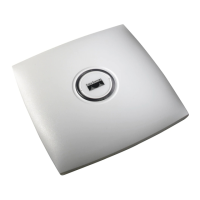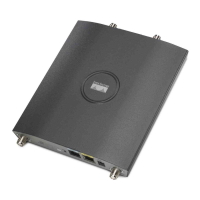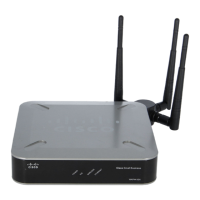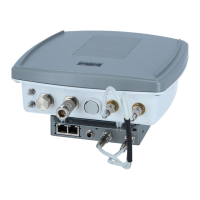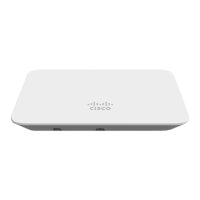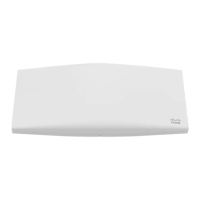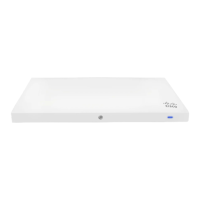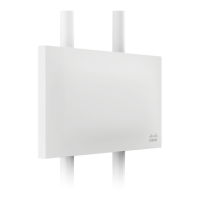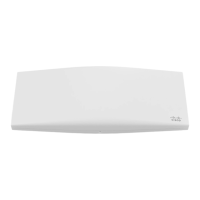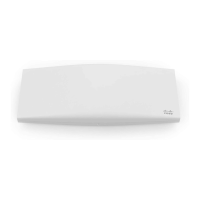the child AP because it is not allowed to transmit during the silent period. In this case, the child AP
dissociates and goes back to scan mode, rediscovers the parent on the new channel and then joins back,
which causes a slightly longer (approximately 3 minutes) downtime.
• For a RAP, the channel for the downlink radio is always selected from within the DCA list, irrespective
of whether the backhaul channel deselection feature is enabled or not. The behavior is different for a
MAP because the MAP can pick any channel that is allowed for that domain, unless the backhaul channel
deselection feature is enabled. We recommend that you have quite a few channels added to the 802.11a
DCA channel list to prevent any radios getting shut down because of a lack of channels even if the
backhaul channel deselection feature is not in use.
• Because the DCA list that was used for the RRM feature is also used for mesh APs through the backhaul
channel deselection feature, keep in mind that any addition or deletion of channels from the DCA list
will affect the channel list input to the RRM feature for nonmesh access points as well. RRM is off for
mesh.
• For -M domain APs, a slightly longer time interval (25 to 50 percent more time than usual) may be
required for the mesh network to come up because there is a longer list of DFS-enabled channels in the
-M domain, which each AP scans before joining the parent.
Configuring Dynamic Channel Assignment
Using the controller GUI, follow these steps to specify the channels that the dynamic channel assignment
(DCA) algorithm considers when selecting the channels to be used for RRM scanning. This functionality is
helpful when you know that the clients do not support certain channels because they are legacy devices or
they have certain regulatory restrictions.
The steps outlined in this section are only relevant to mesh networks.
Step 1
To disable the 802.11a/n or 802.11b/g/n network, follow these steps:
a) Choose Wireless > 802.11a/n or 802.11b/g/n > Network to open the 802.11a (or 802.11b/g) Global Parameters
page.
b) Deselect the 802.11a (or 802.11b/g) Network Status check box.
c) Click Apply to commit your changes.
Step 2
Choose Wireless > 802.11a/n or 802.11b/g/n > RRM > DCA to open the 802.11a (or 802.11b/g) > RRM > Dynamic
Channel Assignment (DCA) page.
Step 3
Choose one of the following options from the Channel Assignment Method drop-down list to specify the controller’s
DCA mode:
• Automatic—Causes the controller to periodically evaluate and, if necessary, update the channel assignment for
all joined mesh access points. This is the default value.
• Freeze—Causes the controller to evaluate and update the channel assignment for all joined mesh access points, if
necessary, but only when you click Invoke Channel Update Once.
The controller does not evaluate and update the channel assignment immediately after you click Invoke
Channel Update Once. It waits for the next interval to elapse.
Note
Cisco Mesh Access Points, Design and Deployment Guide, Release 7.3
OL-27593-01 147
Connecting the Cisco 1500 Series Mesh Access Points to the Network
Configuring Dynamic Channel Assignment
